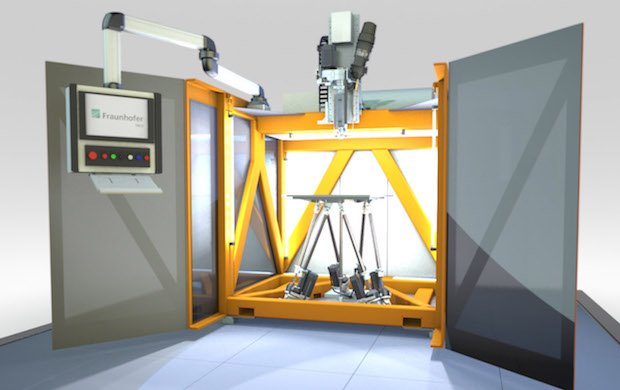Researchers from the Fraunhofer IWU in Chemitz have developed a new high-speed printing system for high-performance plastics. Called Screw Extrusion Additive Manufacturing (SEAM), the technology would eight times faster than conventional extrusion-based 3D Printing processes.
The researchers would be able to achieve complex geometries without supporting structures. Furthermore, the good news is that it will be possible to print on existing injection-moulded components, something which is not usual with other systems. Several tests were carried out with a wide range of plastics: from thermoplastic elastomers to high-performance plastics with a 50 percent content of carbon fibre.
“By combining machine tool technology with 3D printing,” says Dr. Martin Kausch, a scientist at Fraunhofer IWU. “To process the plastic, the researchers use a specially designed unit that melts the raw material and ejects it at a high output rate. This unit is installed above a construction platform that can be swivelled in six axes by using the motion system of a machine tool. “So far, this combination is unique. The hot plastic is deposited in layers on the construction platform. The motion system of the machine ensures that the construction panel slides along under the nozzle in such a way that the previously programmed component shape is produced. The table can be moved at a speed of one meter per second in the X-, Y- and Z-axes and can also be tilted by up to 45 degrees. “This enables us to print eight times faster than conventional processes, enormously reducing the production times for plastic components”, adds Dr. Kausch.
Automotive and aerospace industries as well as tool manufacturers that will benefit from the system will be able to produce large-volume, fibre-reinforced components that are several metres in size.
For further information about 3D Printing, follow us on our social networks and subscribe to our newsletter!
Would you like to be featured in the next issue of our digital magazine? Send us an email at contact@3dadept.com






